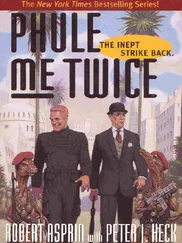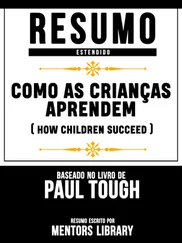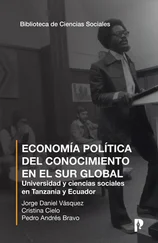In the dozen years that he had been in charge of the organization, first as Rheedlen and then, after he changed the name in 2002, as the Harlem Children’s Zone, Canada had worked with five consecutive New York City schools chancellors. And while each one had come into office with new reforms and lofty promises, in the end none seemed to make much of a difference in the lives of Harlem’s schoolchildren. Still, Canada felt unusually hopeful about the latest chancellor, Joel Klein, a product of the New York City public schools who had gone on to serve in Bill Clinton’s Justice Department, most notably as the lead prosecutor in the federal government’s sprawling antitrust case against Microsoft. Klein was appointed by Mayor Michael Bloomberg, a billionaire technocrat with no previous political experience who was elected in the aftermath of the terrorist attacks on New York City in 2001. Once in office, Bloomberg persuaded the state government in Albany to restructure the city’s education bureaucracy, centralizing power under the mayor’s control. Together, he and Klein succeeded in pushing through a series of significant reforms, often in the face of stiff opposition from teachers’ unions and city officials.
One of Klein’s early strategies was to recruit private groups, both nonprofits and corporations, to contribute in a variety of ways to the public school system. The Harlem Children’s Zone was an obvious candidate, and soon after Klein arrived in New York, in 2002, he called Canada, and the two men met to discuss how the school system and the Harlem Children’s Zone could work better together.
Canada brought with him a complex proposal that had his group and Klein’s Department of Education working hand in hand to administer a few schools in Harlem. “Great idea,” Klein said. “But it will never work.” It would take forever to get parents, principals, and teachers to agree to that kind of power-sharing system, Klein explained; by the time they had the details worked out, he would probably be out of office and back in the private sector. But he suggested to Canada that there was a faster and easier way for the Harlem Children’s Zone to get involved: charter schools.
In 2002 charters were still fairly rare. There were more than two thousand nationwide, but they were mostly small and new, operating off the public’s radar screen. The charter idea was born in Minnesota in the early 1990s: publicly funded schools run by independent organizations, usually nonprofits, outside the control of the local school board. In education circles, there were bitter disagreements over charter schools, and the debate was politically charged. Teachers at charter schools were usually nonunionized, and many conservative policy groups touted the schools as a free-enterprise solution to the nation’s choked educational bureaucracies. Liberals were more likely to oppose charters; many suspected that the Right’s sudden interest in inner-city education was nothing more than a cloak for a campaign to weaken unions and undermine the public school system.
Nationwide, charter schools had a mixed record. Early advocates claimed the schools would raise test scores across the board, and that hadn’t happened; nationally, scores for charter school students were the same as or lower than scores for public school students. But by another measure, charter schools had succeeded: by allowing educators to experiment in ways that they generally couldn’t inside public school systems, they had led to the creation of a small corps of schools with new and ambitious methods for educating students facing real academic challenges. One of the best known and most successful was a fast-growing national network of charters called the Knowledge Is Power Program. KIPP schools targeted low-income minority students, the demographic that in most school districts was mired at the lowest academic levels, and yet KIPP students were for the most part thriving, consistently earning above-average scores on state tests. Canada knew KIPP well. He had visited one of KIPP’s flagship schools, the KIPP Academy in the South Bronx, and he had become friendly with David Levin, the young Teach for America graduate who had helped found KIPP and now ran the organization’s New York schools. Chancellor Klein had encouraged KIPP and other successful charter-management organizations from around the country to apply for charters in New York City, and KIPP had plans to open two new schools in Harlem.
Although Canada was himself somewhat skeptical of the charter school movement—he believed that the only way to successfully educate poor children in significant numbers was to improve, not replace, the public school system—Klein’s offer was too attractive to pass up. If Canada could open his own schools in Harlem, the pipeline he had been trying to create would be complete. Instead of reaching kids here and there, for a few hours a day, he would have them under his care for eight or ten or twelve hours a day, enough time, he hoped, to let him bring order to even the most chaotic young life. So in 2003 the Harlem Children’s Zone submitted its three-hundred-page application to the New York City Department of Education. With Klein’s support, it was approved, and as parents arrived for the lottery that rainy night in April 2004, the opening day of Promise Academy was less than five months away. The school would start with just two hundred students—one hundred in kindergarten and one hundred in sixth grade. Each September, as those students progressed through the school, they would be joined by a new kindergarten and sixth-grade class, and over the course of seven years, the academy would expand into a single, continuous school, educating thirteen hundred students, from kindergarten through the twelfth grade, in the center of Harlem.
Like every charter school in New York, Promise Academy was free of tuition and open by lottery to students from anywhere in the city’s five boroughs. But the only students Canada really wanted in his school were from central Harlem, especially the lowest-performing students, exactly the ones whose parents were least inclined to apply to send their children to a different school. So in the days and weeks leading up to the charter school lottery, the organization’s outreach workers solicited applications from the parents of children in every one of its programs, and they knocked on doors all over Harlem. By the evening of the lottery, they had received 359 applications—almost twice as many children as the school had room for. Now, here at PS 242, every seat in the auditorium was filled with a hopeful parent or a potential student or a patient sibling, and late arrivals were standing in the aisles. They weren’t all model parents—Canada recognized some of them from the organization’s substance- and alcohol-abuse programs—but they all wanted something better for their children. Multicolored helium balloons were tied to the end of each row of seats, which gave the room a festive air. More than anything, though, the place felt nervous.
AT A FEW MINUTES after six, Canada stood at the front of the hall, next to the stage, conferring with a tall, stocky white man in a gray suit: Stanley Druckenmiller, a legendary Wall Street hedge-fund manager who for the last six years had been the chairman of the Harlem Children’s Zone’s board of directors. Druckenmiller was extraordinarily wealthy; his personal fortune of $1.6 billion landed him that year at number 356 on Forbes magazine’s list of the richest individuals on the planet. In person, though, he was restrained and stoical, with the stilted body language of Al Gore. At public events like this one, he often gave the impression that he would rather be poring over a balance sheet or sitting behind a Bloomberg Terminal. But Druckenmiller was deeply committed to Canada and to the Harlem Children’s Zone; next to Canada himself, Druckenmiller had done more than anyone to build the organization into the nonprofit powerhouse it had become.
Читать дальше



![Коринн МакКей - How to Succeed as a Freelance Translator [calibre 3.46.0]](/books/402693/korinn-makkej-how-to-succeed-as-a-freelance-transl-thumb.webp)








